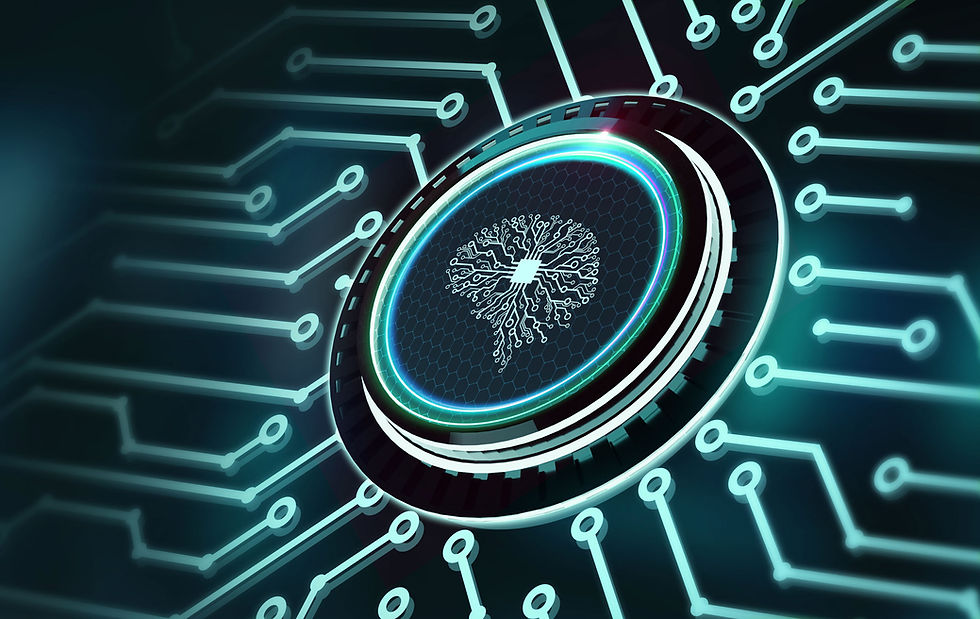Beyond Governance Risk and Compliance (GRC): Why GRC Alone Won’t Protect Your Data
- Stuart Golding

- Nov 22, 2024
- 4 min read

In today's digital age, the importance of Governance, Risk, and Compliance (GRC) in the realm of cyber, data, and information security cannot be overstated. Organisations worldwide invest heavily in GRC frameworks to ensure they meet regulatory requirements, manage risks, and establish robust governance structures.
However, a critical question arises: Is GRC alone sufficient to protect your data?
The answer, unsurprisingly, is no; while GRC is essential, it is not a panacea for all cybersecurity challenges.
This article delves into why GRC alone won't protect your data and what additional measures are necessary to safeguard your digital assets.
The Illusion of Security Through Compliance
One of the most significant misconceptions in cybersecurity is equating compliance with security. Compliance frameworks including PCI DSS, GDPR, Cyber Essentials, ISO27001, NIST and SOC2 set out essential guidelines and standards that organisations must follow.
However, merely adhering to these standards does not guarantee security.
Compliance is often about meeting the minimum requirements to avoid penalties rather than proactively securing data and this compliance-centric approach can create a false sense of security, leaving organisations vulnerable to sophisticated cyber threats that evolve faster than regulatory standards.
The Dynamic Nature of Cyber Threats
Cyber threats are not static; they are continually evolving. Hackers and cybercriminals are always finding new ways to exploit vulnerabilities.
A GRC framework, while comprehensive, is often reactive rather than proactive and it focuses on identifying and mitigating known risks but may not be agile enough to address emerging threats. For instance, zero-day vulnerabilities, which are unknown to the software vendor, can be exploited by attackers before any patches or updates are available.
Relying solely on GRC frameworks can leave organisations exposed to such unforeseen risks.
The Human Factor
Another critical aspect that GRC frameworks often overlook is the human element.
Human error remains one of the leading causes of data breaches, with employees inadvertently clicking on phishing emails, using weak passwords, or failing to follow security protocols and policies.
While GRC frameworks include policies and training programs to mitigate these risks, they cannot eliminate human error entirely. A robust cybersecurity strategy must go beyond GRC to include continuous education, awareness programs, and a culture of security mindfulness among employees.
The Need for Advanced Security Technologies
To truly protect data, organisations should seriously consider complementing their GRC efforts with advanced security technologies.
Tools such as intrusion detection systems (IDS), intrusion prevention systems (IPS), and endpoint detection and response (EDR) provide real-time monitoring and threat detection capabilities. Artificial intelligence (AI) and machine learning (ML) can analyse vast amounts of data to identify patterns and anomalies that may indicate a cyber-attack. These technologies can respond to threats faster than traditional GRC frameworks, providing an additional layer of security.
Continuous Monitoring and Incident Response
Effective cybersecurity requires continuous monitoring and a robust incident response plan.
GRC frameworks typically involve periodic audits and assessments, which may not be sufficient in the face of persistent and sophisticated cyber threats. Continuous monitoring allows
organisations to detect and respond to threats in real-time, minimising potential damage.
An incident response plan ensures that when a breach occurs, the organisation can quickly contain and mitigate the impact, reducing downtime and financial losses.
Integrating GRC with Cybersecurity Best Practices
To enhance data protection, organisations should integrate GRC frameworks with cybersecurity best practices.
This integration involves aligning GRC policies with the latest security standards and technologies. For example, implementing a zero-trust architecture, which assumes that threats can come from both outside and inside the network, can significantly enhance security.
Regularly updating and patching systems, conducting penetration testing, and performing security risk assessments are also crucial.
Conclusion: A Holistic Approach to Data Security
While GRC frameworks are vital for establishing a baseline of security and ensuring regulatory compliance, they are not sufficient on their own to protect data.
Organisations should consider adopting a holistic approach to cybersecurity that includes advanced technologies, continuous monitoring, and a strong focus on the human element. By going beyond GRC, organisations can better defend against the ever-evolving landscape of cyber threats and ensure the safety and integrity of their data.
In conclusion, GRC is a critical component of a comprehensive cybersecurity strategy, but it is not the ultimate solution.
To truly protect your data, you must look beyond GRC and embrace a multifaceted approach that addresses the dynamic nature of cyber threats, the importance of human factors, and the need for continuous vigilance and advanced security measures. Only then can you achieve a robust and resilient cybersecurity posture.
UKDataSecure are experts in managing holistic approaches to cyber and data security bringing together the three key pillars of data security, people, process and technology, for organisations of all sizes, from technology and financial start-ups to multinational companies and everything in between.
For more information please visit - Services | UKDataSecure | England
To chat with our Holistic Cyber and Data Security expert book a chat here - https://bit.ly/ukdsbookachat
We look forward to speaking to you and supporting your cybersecurity journey very soon.
Stuart Golding - Holistic Cyber and Data Security - Principal Consultant
#cybersecurityasaservice #caas #phishing #ransomware #denialofservice #dos #maninthemiddle#mitm #sqlinjection #crosssitescripting #xss #dnsspoofing #malwareasaservice #maas #ransomwarasaservice #raas #databreach #cybersecurity #datasecurity #informationsecurity #informationsecurityconsultant #ransomwarasaservice #ukdatasecure




Comments